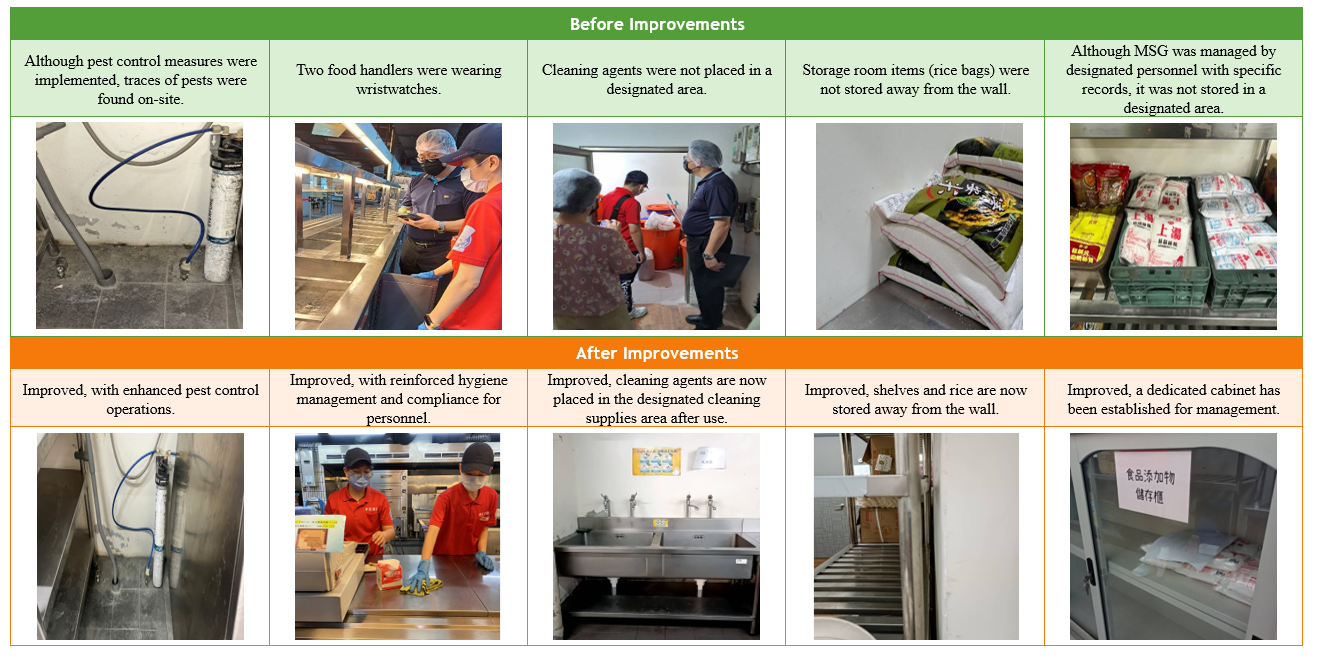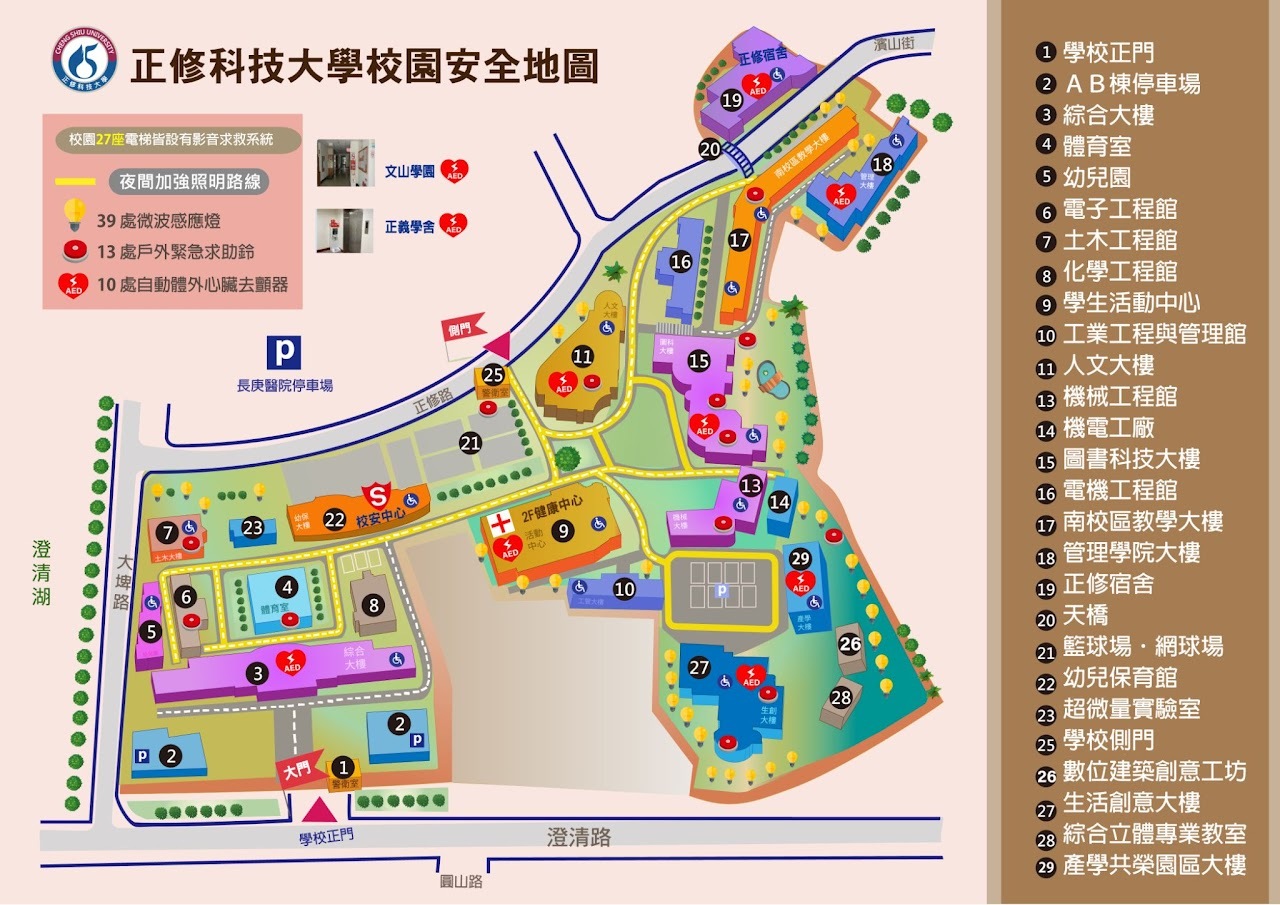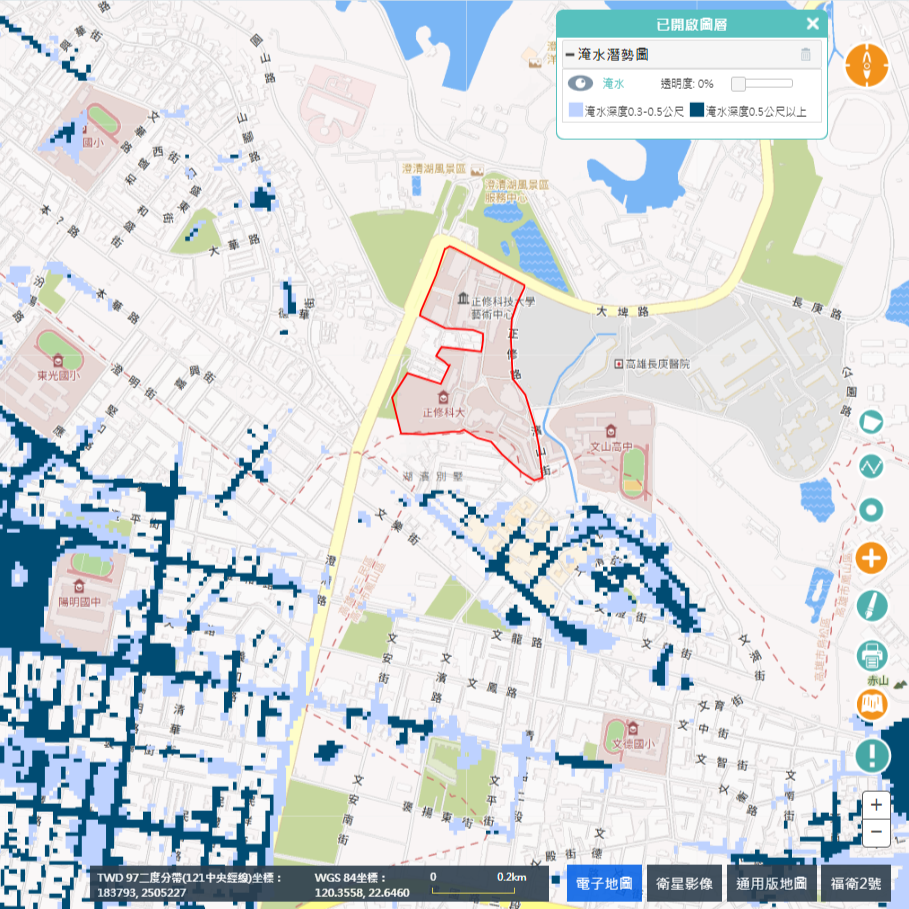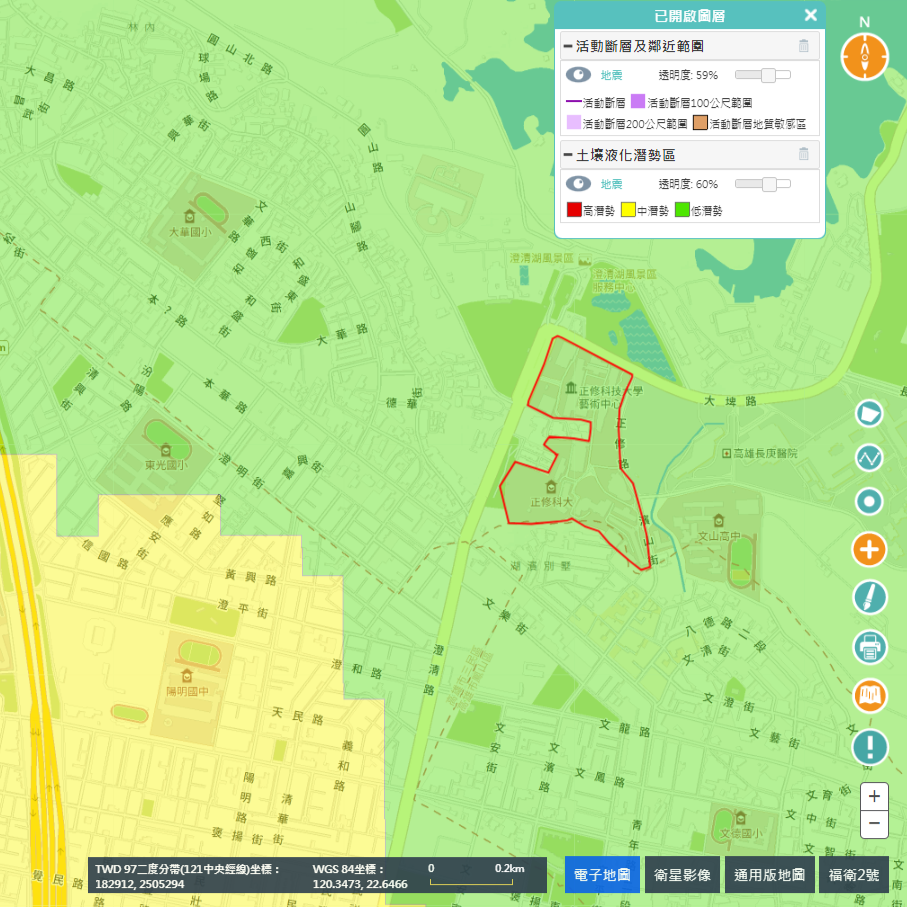Campus Environmental Safety
Constructing a Campus Safety Network Mechanism
Our university has established a Center for Campus Safety and Disaster Prevention Reporting and Response and formulated an "Operational Plan for the Campus Safety and Disaster Prevention Handling Center." This plan integrates community police resources and the campus security system, with 24-hour monitoring to handle emergencies, traffic accidents, medical care, and other sudden incidents, ensuring timely communication and immediate services. The center oversees units responsible for constructing internal and external safety network mechanisms, strengthening both software and hardware facilities on campus, and effectively enhancing overall campus safety.
Each quarter, the university compiles reporting data to develop comprehensive preventive strategies. Campus officers patrol and record safety conditions in designated areas daily. The campus is equipped with 5 emergency call systems and 796 emergency call buttons (phones), with regular updates and improvements to campus facilities. A mobile campus safety unit has been established to improve incident response efficiency. The university categorizes campus safety incidents into four levels based on impact, severity, and subsequent developments, with corresponding command and control measures.
Classification of Campus Safety Incident Levels and Command and Control Measures
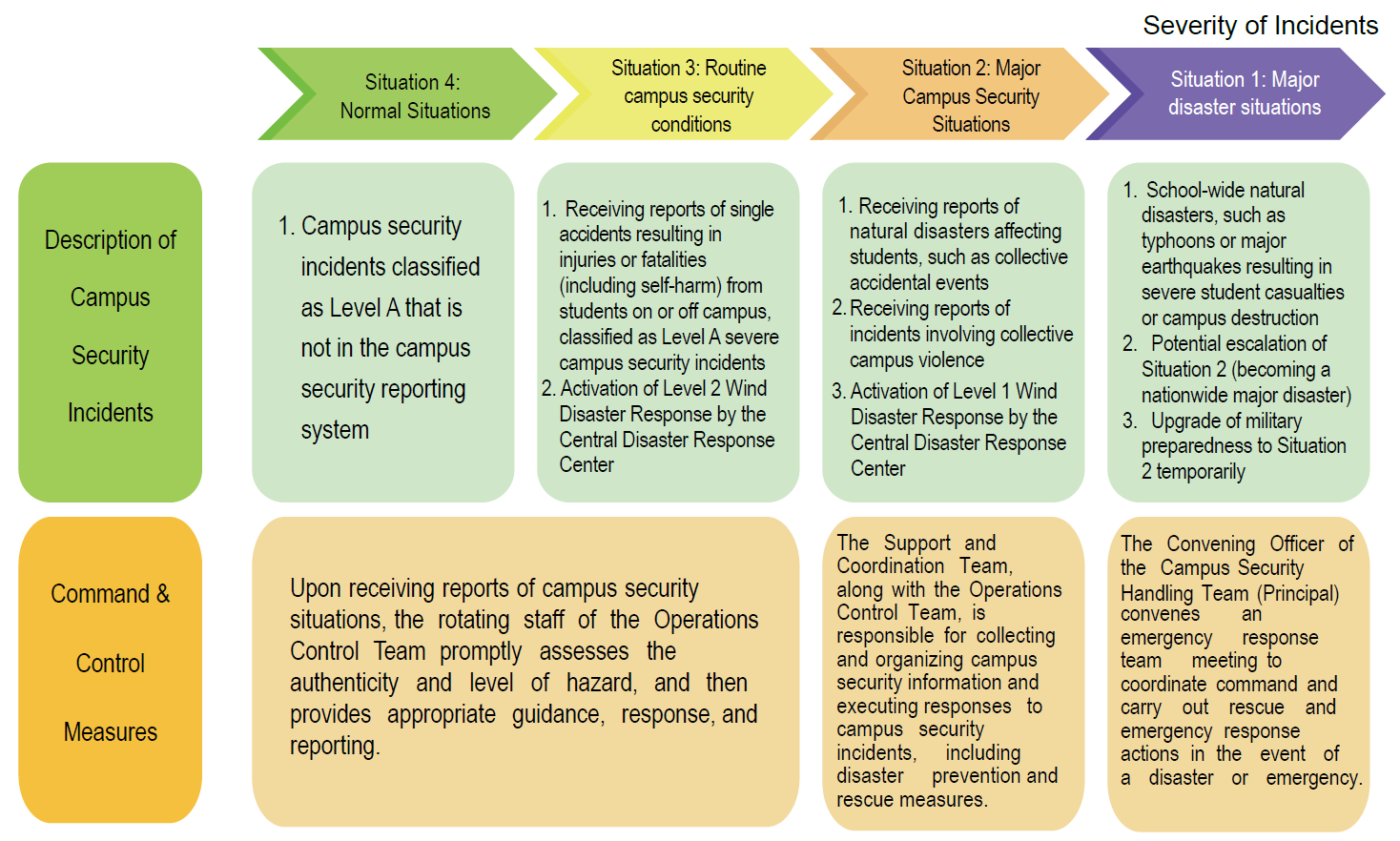
|
▲ Digital Audio-Visual Emergency Help Button |
▲ Campus Safety Map |
Disaster Potential Analysis
Our university conducts a review based on the disaster potential maps provided by the Ministry of Education's Disaster Prevention Education Information Network GIS platform and the disaster potential analysis results from the National Science and Technology Center for Disaster Reduction. This review identifies various potential disaster risks that could occur on campus and in nearby areas. The university conducts campus environment safety inspections and on-site surveys to proactively implement disaster prevention and mitigation measures. Within a 500-meter radius of the campus, there is a potential risk of flooding (dark blue area), and the campus is located in a low soil liquefaction potential zone for earthquake disasters (green area).
Disaster Potential Analysis Results for the Campus and Surrounding Areas
|
Cheng Shiu University Location: Niaosong Village, Niaosong District, Kaohsiung City |
|||
|
Disaster Type |
Disaster Potential Type |
Presence of Disaster Potential |
Detailed Description |
|
Flood Potential |
6-hour Rainfall of 350 mm Potential Zone |
Yes |
Not directly located in the 6-hour rainfall of 350 mm potential zone, but within 500 meters of such a zone. |
|
12-hour Rainfall of 400 mm Potential Zone |
Yes |
Not directly located in the 12-hour rainfall of 400 mm potential zone, but within 500 meters of such a zone. |
|
|
24-hour Rainfall of 500 mm Potential Zone |
Yes |
Not directly located in the 24-hour rainfall of 500 mm potential zone, but within 500 meters of such a zone. |
|
|
24-hour Rainfall of 650 mm Potential Zone |
Yes |
Not directly located in the 24-hour rainfall of 650 mm potential zone, but within 500 meters of such a zone. |
|
|
Debris Flow, Landslide |
Debris Flow Potential Stream |
No |
|
|
Large-scale Landslide Potential Area |
No |
No potential area within 500 meters. |
|
|
Dip Slope |
No |
No potential area within 500 meters. |
|
|
Rock Slides |
No |
No potential area within 500 meters. |
|
|
Rock Slides |
No |
No potential area within 500 meters. |
|
|
Rockfalls |
No |
No potential area within 500 meters. |
|
|
Fault and Soil Liquefaction |
Soil Liquefaction Potential Zone |
Yes |
Low potential. |
|
Active Fault |
No |
No potential area within 500 meters of a fault-sensitive zone. |
|
|
Tsunami and Coastal Disasters |
Tsunami Inundation Potential Zone |
No |
|
|
Volcanic Potential |
Volcanic Potential |
No |
|
|
Nuclear Accident |
Nuclear Accident Emergency Response Zone |
No |
|
Note: Judgment Rules:(1) Directly located in the potential zone, (2) Not directly located in the potential zone, but within 500 meters of such a zone, (3) No potential zone within 500 meters.
|
▲ Flood Disaster Potential Map |
▲ Soil Liquefaction Potential Map |
Enhancing Safety Education for Faculty and Students
To strengthen student safety education, our university organizes disaster prevention education programs every semester, including disaster and earthquake safety campaigns, evacuation route drills, and workshops. These activities aim to familiarize students with safety response mechanisms and promote national defense education goals. Integrated with the national defense curriculum, all faculty and students are required to complete earthquake evacuation and sheltering drills, practice evacuation routes, and conduct headcounts, ensuring everyone understands the key procedures. During the academic year 2022, the university also organized Campus Safety Week, Campus Safety Seminars, Digital Poster Competitions, and Banner Creativity Competitions to raise awareness of campus safety among students.
|
▲ Earthquake Evacuation Drills in the Kindergarten |
▲ Earthquake Safety Awareness Campaign |
Safety Education Awareness in the Academic Year 2022
|
Disaster Prevention Measures |
Activity Benefits |
|
Production of "Student Safety Cards" |
Produced 5,000 "Student Safety Cards" for first-year and transfer students, complemented by 4 campus safety seminars. |
|
Earthquake and Disaster Safety Awareness Campaign and Evacuation Drills |
Every year, in coordination with National Disaster Prevention Day (September 21), earthquake evacuation drills are held during school assemblies, in student dormitories, and in the kindergarten. These activities include disaster and earthquake safety awareness education, explaining earthquake evacuation principles, and conducting practical drills. Approximately 10,582 people participated. |
Promoting Traffic Safety Education
To cultivate good traffic safety habits among faculty and students and establish proper traffic order to ensure safety, our university has developed the "Traffic Safety Education Implementation Plan" and formulated the "Guidelines for the Establishment of the Traffic Safety Committee." The committee is chaired by the university president, with the Dean of Student Affairs and the Director of the Military Training and Campus Safety Center serving as the Executive Secretary and Deputy Executive Secretary. The committee meets once per semester to discuss campus traffic safety issues.
Traffic safety education is promoted through various channels, including new student orientation, school-wide assemblies, and department meetings, where experts and scholars are invited to lecture on traffic safety. Hands-on traffic safety activities are integrated into life education to emphasize motorcycle safety. The "Traffic Safety Service Club" was established to train members of the "Student Traffic Self-governance Team" to assist in traffic control and maintain order.
|
▲ Traffic Safety Service Club |
▲ Traffic Safety Education and Awareness Campaign |
In the academic year 2022, 24 traffic safety promotion events, 25 diverse traffic safety activities, and 6 traffic safety command guidance and training sessions were held, with a total participation of 5,000 faculty and students.
The university has strengthened campus traffic safety planning and control by enhancing vehicle management and permit procedures according to the "Regulations on Access Control and Parking Lot Management." Vehicles are prohibited from entering campus teaching areas without prior approval, and security personnel are responsible for verifying and issuing passes. During arrival and dismissal times, campus safety officers and the Student Traffic Self-governance Team oversee traffic control at the school gates. The entrance and exit are designed with separate lanes for cars, motorcycles, and pedestrians, with dedicated pedestrian paths managed by the security team to ensure smooth traffic flow.

▲ The School Vicinity Accident Hotspot Map
According to the school vicinity accident hotspot map from the Ministry of Transportation and Communications' Road Safety Information Inquiry Network, the university is located within 500 meters of both high-risk areas (yellow zones) and accident hotspots (dark blue dots), as shown in the accompanying diagram.
Number of Accidents and Injuries Around the School
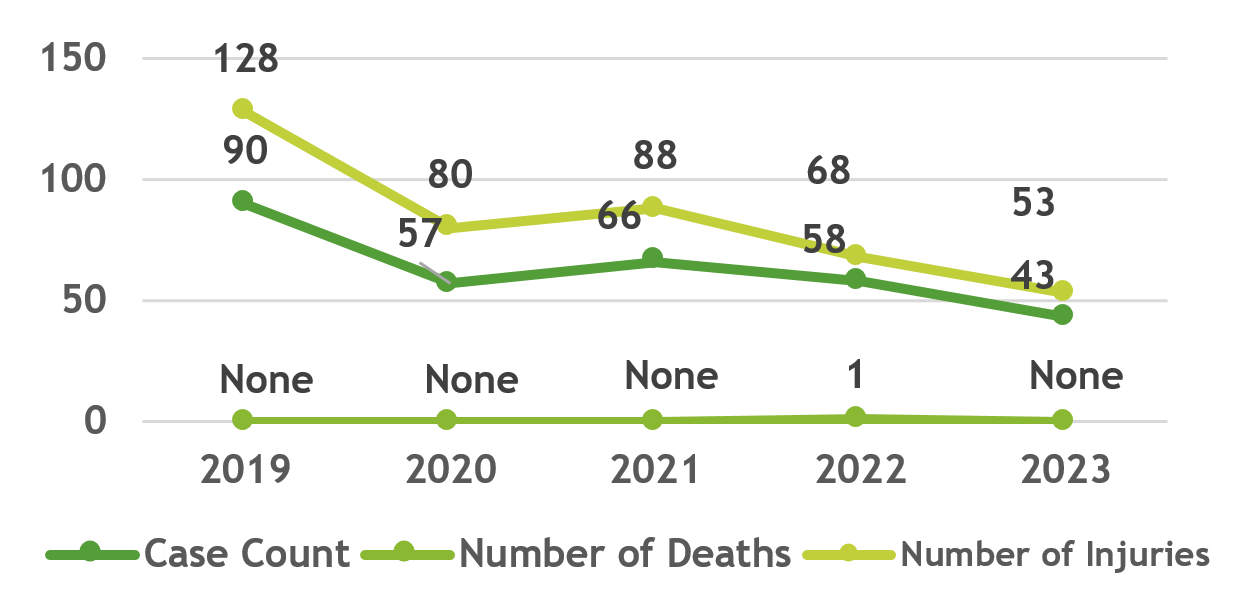
Note: Data sourced from the Ministry of Transportation and Communications' Road Safety Information Inquiry Network. The accident hotspot statistics include incidents involving the general public.
In the academic year 2022, there were 41 traffic accidents involving students, with a 50% reduction in the accident rate, indicating the effectiveness of the university's traffic safety improvement measures. The number of accidents within a 500-meter radius around the school has also steadily decreased year by year.

Campus Restaurant Hygiene Audit
In the academic year 2022, our university underwent food hygiene guidance from the Ministry of Education, assisting two vendors. Based on the results of this guidance, we have continued to strengthen hygiene management in the school’s dining areas and among personnel, as well as the management of food additives and cleaning agents, to protect the food hygiene and safety of faculty, staff, and students. Further guidance is scheduled for May 3, 2024, in the academic year 23. The following are the before and after improvements in the student cafeteria’s buffet area (Zhongye International Co., Ltd.)
